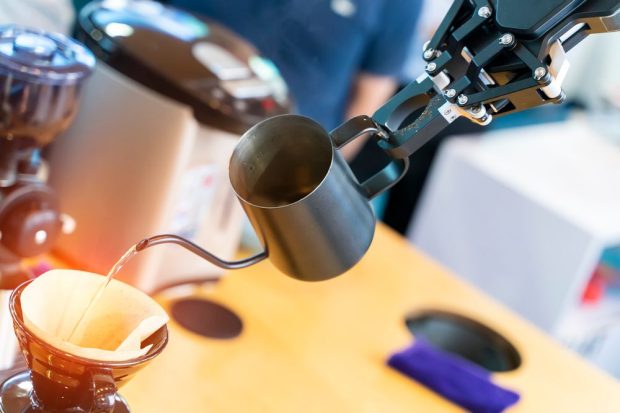Restaurants Hiring Even as QSRs Automate to Shrink Labor Costs

Even while restaurants’ hiring recovers, McDonald’s and other brands are automating to reduce headcount and labor costs.
That restaurant hiring might lead to problems.
This, as the U.S. Bureau of Labor Statistics (BLS) data reported earlier this month revealed that the restaurant workforce grew significantly in November, with jobs up by 62,000 month over month, accounting for nearly a quarter of the nation’s job growth in that period. While 11.9 million people currently work in the sector, that tally is down 2% from 2019 but up 87% from the mid-pandemic low.
Yet, given the labor pressure and the related wage inflation of the past couple years, restaurants have begun seeking new ways to cut down their labor needs altogether and consequently lower costs. For instance, reports have circulated in the past week from a range of publications about McDonald’s conveyor belt automated drive-thru in Fort Worth, Texas, announced at the start of this month, inciting strong responses from consumers.
These reports come after a TikTok video filmed at the location, which leverages a conveyor belt drive-thru lane for more efficient order collection, went viral. Popular reactions ranged from the highly positive (“Finally, my order will be quick and accurate”) to the enraged (“I will NOT support this BS”), skewing to the former.
To be sure, McDonald’s is not the only industry behemoth looking to cut back on labor costs via automation. In September, Starbucks, the world’s largest restaurant chain by revenue, shared an update on its efforts to do so.
“There are two enablers to automation,” John Culver, Starbucks group president, North America and chief operating officer said in an Investor Day presentation. “First is how are we going to reimagine our supply chain for the future. And second, how are we going to make the right investments in technology to make that work easier.”
He noted that digital ordering technologies, automated inventory management systems and smarter analytics have made a significant impact, adding that the company is trying out an “automated counting and receiving” system on the supply chain side.
Meanwhile, a handful of major restaurant brands are testing out automation in the kitchen, leveraging robotics for food preparation and production. Tech provider Miso Robotics, for one, which makes systems for fry cooking and beverage dispensing, has been working with brands ranging from Jack in the Box to Chipotle.
Delivery, too, is getting the automated treatment, with restaurants and aggregators alike partnering with robotics companies for delivery via drone and sidewalk rover.
Charleys Philly Steaks, for one, a cheesesteak chain with more than 700 locations across 17 countries, announced in the fall a partnership with drone delivery pilot in Durham, North Carolina in partnership with Flytrex. In an interview with PYMNTS, Brian Hipsher, the cheesesteak brand’s chief marketing officer, noted that the technology could help the company drive delivery sales at locations that have previously been predominantly dependent on on-site sales.
“[Delivery channels] represent between 20 to 25% of our sales … and it varies by location, of course. Our mall locations, maybe not as much [delivery], and our strip center freestanding buildings a little bit more,” Hipsher explained. “This particular location that we started this pilot in is a mall location, and it’s pretty cool because we think it’s going to expand our ability to deliver more food at [such a] location.”
